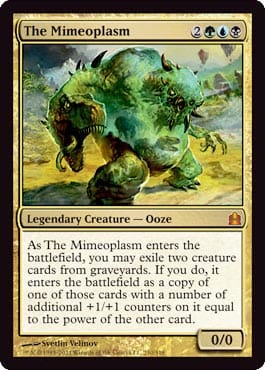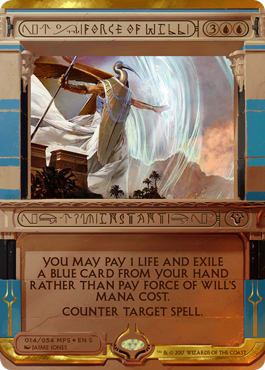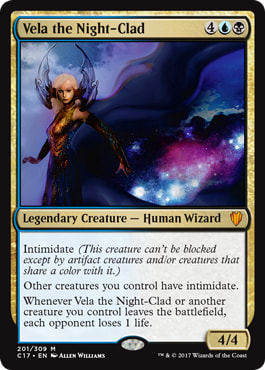I was working on an article that would give people a peek at my casual-player lifestyle, and then I read Robby Rothe’s article from Friday, Say Yes to Planechase. It is a great article, and I recommend you read it. He discussed Planechase 2012, explaining why the product didn’t have the goodies that Modern and/or Legacy players were looking for. The general gist of the argument is that Planechase 2012 is for casual players. Throwing in cards for every other group will drive up the price to such a point that the casual players won’t buy it. What is the point of producing a product aimed at casual players if they aren’t buying it?
While I understand what he is saying, I don’t agree with all of the analysis. The last products aimed at casual players were the Commander decks from last summer. Much like the current Planechase decks, the decks had some new cards that were designed to appeal to a casual-only crowd but that would not probably have any effect on any tournament.1 Wizards stated that the cards included in the Commander decks were legal only in formats that they were currently legal in. If the cards were new, they were only legal in Legacy and Vintage. This allowed them to do crazy things with new cards that would appeal to casual players and bring crazy plays to multiplayer games without having to worry about unbalancing the Standard format. It was unlikely these cards would damage the Eternal formats of the time—huge, legendary creatures were not seen as a real issue in formats where almost every Magic card printed is legal.
With so many similarities between the Commander decks and the current Planechase decks, we can safely look at how Commander was released to form a prediction of how Planechase should shake out.
Commander saw a limited release in the first week or so that it was on sale. There wasn’t nearly enough product to handle the demand. Basic supply versus demand would suggest that the price would go up, and it did. There were enough players who wanted it now—and were willing to pay more than the MSRP to get it now—that the price went up. I was holding a Commander launch party that had sold out early, but I received several calls from players who weren’t all that excited about the launch party but who were willing to pay the entry fee to get a hold of at least one of the Commander decks. My store had ordered as many as it could, and it ended up selling all of them to a single individual. I’m sure they ended up on eBay.
The next wave of the product came, and the prices held. Supply was almost there, and demand was still solid. The next wave saw the prices start to come down. Eventually, with wave after wave of product, soon most stores had Commander decks on the shelves for more than a day. If you go to Target or Wal Mart, you’ll probably find a Commander deck or two sitting there for MSRP.
The end result was that any player who wanted a Commander deck and was willing to pay at least the MSRP eventually picked up a Commander deck. If a player was willing to pay more, he or she could buy the deck right away.
So, what if Wizards had put a known Legacy staple in every Commander deck (or in the Planechase 2012 decks) or simply created a card that would be valuable in Legacy decks? What would have happened? There are basically two possibilities:
1 – Legacy players and casual players clamor for the Commander decks, trying to buy copies of the cards they desperately need in their decks. With all these extra people trying to buy the decks, the price goes up over MSRP. Way over. Instead of people paying almost twice the MSRP, they are paying three or four times the MSRP. Remember that if there is a Legacy staple in a Commander product, it means there is only one copy. That Legacy player needs four copies of the Commander deck to have the four copies he probably needs for his deck. When considering everyone purchasing Magic cards, Legacy players may make up a small percentage of the population, but when they are trying to acquire four times the number of cards as everyone else and they have demonstrated a willingness to pay huge sums of money for particular cards, the price of the Commander decks would climb and climb.
The next wave of Commander decks comes in, and the price still doesn’t come down because demand is so high. Wave after wave of the product hits the shelves and is purchased the same day at practically whatever price the owner asks. Many casual players who are willing to pay MSRP don’t buy the decks because they are not willing to pay, for example, triple the MSRP. Eventually, all the decks make it to the marketplace and due to high demand, and the price never really comes down, leaving casual players without decks and the secondary market flooded with the non-Legacy cards in the Commander decks.
2 – Legacy players and casual players clamor for the Commander decks, trying to buy copies of the cards they desperately need in their decks. With all these extra people trying to buy the decks, the price goes up over MSRP. Way over. Instead of people paying almost twice the MSRP, they are paying three or four times the MSRP. Remember that if there is a Legacy staple in a Commander product, it means there is only one copy. That Legacy player needs four copies of the Commander deck to have the four copies he probably needs for his deck. When considering everyone purchasing Magic cards, Legacy players may make up a small percentage of the population, but when they are trying to acquire four times the number of cards as everyone else and they have demonstrated a willingness to pay huge sums of money for particular cards, the price of the Commander decks would climb and climb.
Wizards intentionally put those Legacy staples in the deck. The goal for doing that was to encourage Legacy players to buy the Commander decks. The goal was to increase sales of the product. Wizards knows that by doing this they expanded the market for these decks beyond just casual players, so they know that demand is going to be very high for the decks. They know that if demand is high, the best way to keep the price down is to increase the supply. Increasing supply (and demand) will mean that casual players who will only pay MSRP for the product will get it (thus satisfying the real target audience), and they will make more money. Wizards doesn’t get more money for the Commander deck simply because you paid more. The shop owner gets more money because he charged you more. While that is great for the shop owners, they already have the From the Vaults series to gouge players.
Knowing all of this, after the first wave or two of overpriced Commander decks, Wizards begins to release large quantities of Commander decks, having anticipated the demand. This starts to bring the price down until the decks are back to MSRP.2 In the end, all the casual players will have the copies of the Commander decks they were looking for, the Legacy players will have more copies of a format staple, and Wizards will have sold far more copies of the Commander decks than they would have had they not included a Legacy staple in each Commander deck.
We know that Wizards chose Option 1 for both the Commander decks and now for the Planechase decks, but why? When you look at the Planechase decks, they include a variety of legendary creatures with impressive, game-changing affects and abilities. These cards are in the decks as a way to ensure that Commander players—who may not enjoy Planechase and may not have purchased the Planechase decks—have a reason to buy the decks.
Wizards clearly understands the value of producing a product that appeals to a larger market or they wouldn’t have included these legendary creatures. They could have just as easily added more cards that specifically interact with the plane cards, but they did not. In spite of including cards for Commander players, they did not include a card or cards that would appeal to those playing in the Eternal formats. Why would Wizards, a company trying to maximize profit, not choose the second option?
One reason, the reason Robby Rothe suggested in his article, was that the product is dedicated to casual players. I can certainly see the value of the reasoning. Robby discussed it in significant depth. My problem is that simply adding even one card to each deck that appeals to the Eternal-format crowd takes nothing away from making the set a casual set. Adding several cards for the Commander crowd took nothing away from making the Planechase decks about the planar cards and the specific target audience. As long as Wizards makes efforts to ensure that the supply matches the demand, having a product that is desirable to a larger market is bound to make it more profitable and still available to everyone who wants it.
In relation to Legacy, I expect the reason this has not happened comes from Wizards’s reluctance to support a format that is capped by their no-reprint policy for certain cards. As long as no other original dual lands will be printed, there can be no more Legacy players than currently exist right now. It simply doesn’t make sense for Wizards to support Eternal formats when there are already the maximum number of players playing.
This is the reason Modern exists. No card in the Modern format is on any no-reprint list. Wizards can reprint these cards at any time. Any cards that are difficult to find can easily be reprinted, upping the supply and reducing the cost of the card. Robby explained that the reason there were no Modern cards in this set is that Modern did not exist when Planechase 2012 was being created. I would go a step further and say that Wizards will not reprint Modern cards in any of their summer casual deck releases. Should Wizards offer up five new Commander decks next summer, don’t expect to see Ravnica dual lands in those decks.
You are probably wondering why not, as I made it very clear that including these cards would drive the sales of these products through the roof. The reason for not including it here is the limited profit. Selling more Planechase or Commander products would be great, but in the end, they are fringe products. Given the choice of selling more Commander products or more Return to Ravnica packs, Return to Ravnica would make far more sense.
The only reason to include a reprint in Planechase or Commander or some other smaller-selling product would be to allow more copies of a card you would not want to see in Standard any longer. Since there is no single card in Modern that would unbalance Standard if it were included, why use the fringe products when you can simply put the card in the next big set? Wizards would make far more money putting the Ravnica shock lands into Magic 2013 or Return to Ravnica than they would by putting them into Commander or Planechase.
While I might not agree with Robby’s reasons that Eternal cards are not in Planechase, I agree that they shouldn’t be there and that they probably won’t be there in any of the future casual sets to come. I hope everyone has the chance to enjoy Planechase over the next few weeks. It is one of my favorite ways to play Magic.
Bruce Richard
1 I know how much Scavenging Ooze costs and why it costs that much. I know that the deck that it came in is currently priced far higher than any other Commander deck in that series. The discovery of the Ooze for tournament play was something that didn’t happen until well after the Commander release. Scavenging Ooze had no effect on the cost of Commander decks until several months after they were released.
2 Not all of them would return to the Manufacturer’s Suggested Retail Price. Undoubtedly, each staple will demand a different price, leaving each of the decks to hold different values. In spite of that, if Wizards prints enough of each set, it is unlikely any of the decks would be more than a few dollars above MSRP.




























